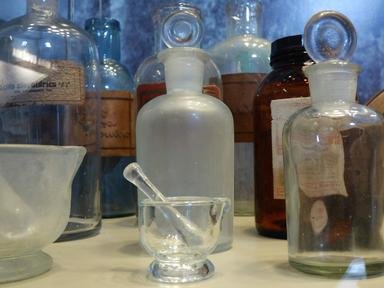Quiz Answer Key and Fun Facts
1. Lithium is a light, highly reactive silvery metal. If you wanted to find some lithium in your house, where would be the best place to look for it?
2. Americium is an element that does not occur in nature; it is man-made. It is highly radioactive, and extremely toxic as well. But you probably have a small amount of it in your home. Where would you look for it?
3. Iridium is one of the rarest elements in the Earth's crust. But if you prefer writing letters to texting, you might have a small amount of it in your home. Where would you look for it?
4. Iodine is an element familiar to most people, at least by name. If you were at home and looking for some iodine, where might you find some?
5. Tungsten, or wolfram, is an uncommon element, but it is an essential component of one very common device that used to be found commonly in the home. Where could you have found some tungsten if you needed it?
6. Cerium is the most abundant of the "rare earth metals." It has a number of industrial applications, but where could some people find an appreciable amount of cerium in the home?
7. Once upon a time, you could have obtained some mercury from your thermometer. Most modern thermometers don't contain any mercury, however. So where might be a good place to look for some?
8. We'd all like to lay our hands on some gold. Where could you find up to a gram of gold in your home?
9. Uranium? Isn't that the stuff they use to make atomic bombs? Surely there can't be any significant amount of uranium in your house! Maybe, maybe not. But if there is, where's the most likely place to find it?
10. If you needed to lay your hands on some astatine inside your house, where would look?
Source: Author
daver852
This quiz was reviewed by FunTrivia editor
rossian before going online.
Any errors found in FunTrivia content are routinely corrected through our feedback system.
